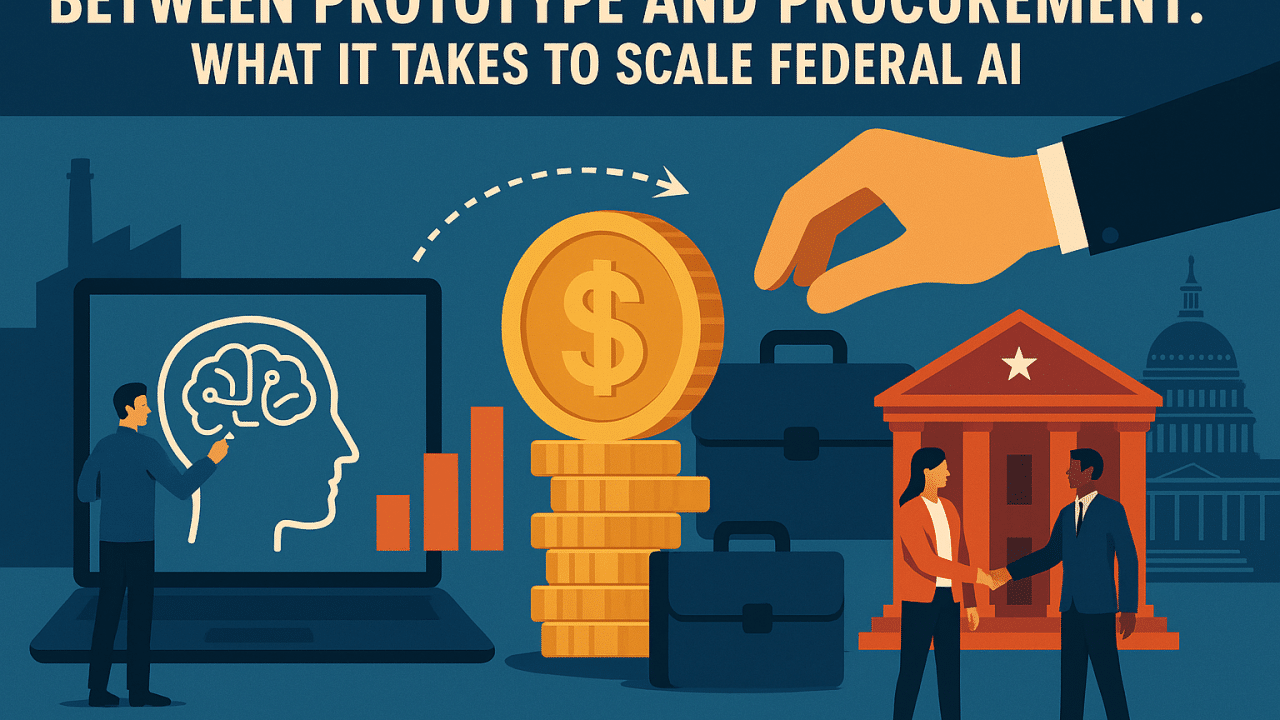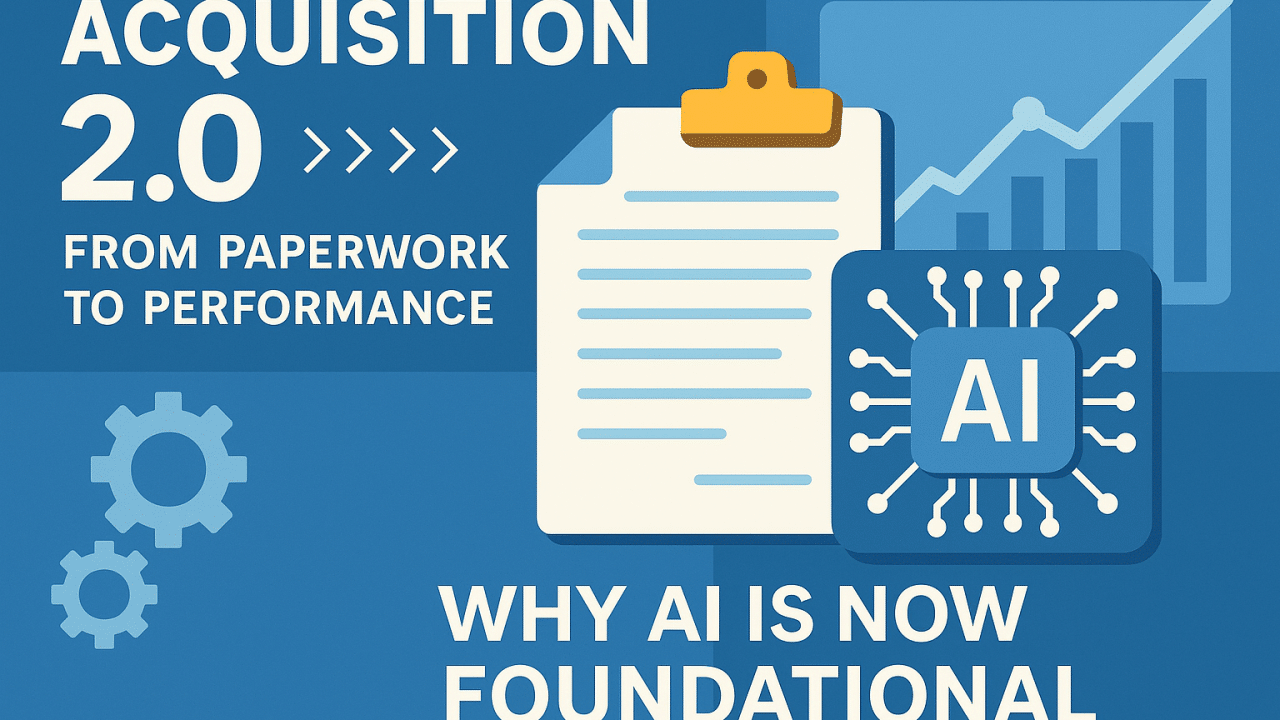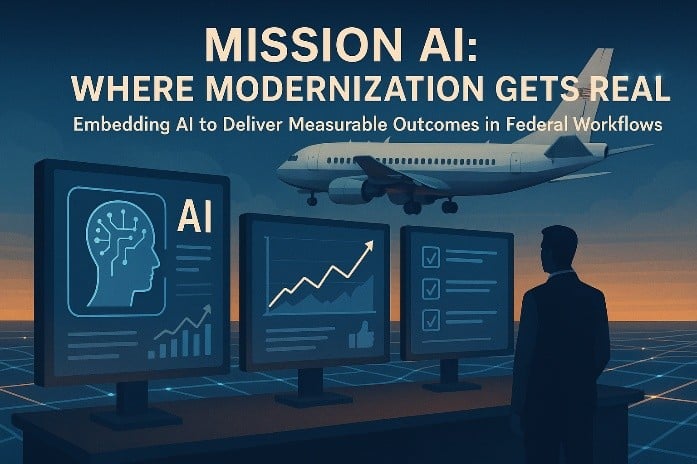Abundance in Action: Applying AI Maturity to Public-Sector Modernization
NOT A TREND TO WATCH. A SHIFT TO NAVIGATE.
At February’s NVTC AI State of the Union, Bill Whyman offered a sobering stat: even under best-case conditions, enterprise AI adoption will only reach 10% by 2026.
That’s not a failure. It’s a signal. It reminds us that AI maturity is less about technical capability, and more about the leadership capacity to translate insight into aligned, sustainable action.
START WITH WHAT’S ACTUALLY CHANGING
Many agencies and firms have been circling AI for years through pilots, task orders, and centers of excellence. Yet most haven’t moved past experimentation.
Why? Not because tools are unavailable. But because most leaders are still making sense of where AI fits, and how to move forward responsibly given budget limits, legacy systems, and personnel constraints.
From our vantage point, AI is no longer additive. It’s architectural. It’s not a layer to be tacked on later — it’s beginning to shape the contours of how modernization happens.
“It’s not about adopting a tool. It’s about adapting to terrain.”
WHY SERVICES FIRMS NEED TO REALIGN
Across the GovCon sector, the past 3 months have pushed many firms — including ours — into serious reevaluation. Retirements, talent shifts, tighter budgets, political headwinds. Traditional business models are under pressure.
And through all of it, one thing has become more constant: technology. Specifically, AI-enabled tools that agencies increasingly view as levers for doing more with less.
That shift is reflected in how programs are being scoped and sourced:
- SBIR prototyping: In December 2024, the U.S. Army launched a Direct to Phase II solicitation focused on voice-commanded maneuvering for autonomous ground vehicles. Awards offer up to $2 million over 18 months for AI capabilities that show field readiness (U.S. Army, 2024).
- OTA acquisition: The Department of Defense is increasingly using Other Transaction Agreements (OTAs) and Commercial Solutions Openings (CSOs) to onboard AI software quickly, emphasizing speed, modularity, and iterative development (GovWin IQ, 2025).
- Alliant 3: GSA’s next-generation IT contract vehicle, with an RFP issued in October 2024, prioritizes emerging technologies, including AI, as part of a flexible service portfolio spanning civilian and defense missions (GSA, 2024).
These aren’t edge cases. They’re early indicators of where service models are headed.
FROM INSIGHT TO OUTCOME: WHERE AI’S ALREADY AT WORK
In sectors like aviation, infrastructure, and defense — where Evans focuses — we’re already seeing AI move from theory to practical application:
- FAA UAS integration: The BEYOND program, extended under the FAA Reauthorization Act of 2024, is advancing standards for BVLOS drone operations. GenAI is being piloted to support waiver documentation, planning, and safety risk modeling (AUVSI, 2024).
- ATC communication pilots: Research shows that language AI models can analyze voice communications on airport surfaces, assist in detecting potential collisions, and improve situational awareness between controllers and pilots (arXiv, 2024).
- DoD logistics and C2: The AI Rapid Capabilities Cell (AI RCC), backed by the CDAO and DIU, has allocated $100 million through FY24–25 to pilot GenAI tools for logistics, software development, and decision support (Defense.gov, 2024).
None of these are about pushing tech for tech’s sake. They reflect mission-aligned AI use in tightly constrained, high-accountability environments.
CLARITY → CONTEXT → CATALYST
We’ve found the Clarity → Context → Catalyst framing helpful — not as a branded method, but as a practical way to think through transformation:
- Clarity: Understand how AI is shifting expectations across operations, procurement, and talent strategy.
- Context: Align to real-world federal constraints: acquisition timelines, labor categories, data readiness, and security requirements.
- Catalyst: Make the next move real, whether that’s launching a sprint, shaping pipeline strategy, or reframing a program approach.
AI maturity doesn’t demand perfection. But it does demand motion, paired with perspective.
WHERE THIS LEAVES US
Nobody has this fully figured out. And that’s okay.
What matters is whether we’re adapting with intent — choosing where to align, where to upskill, and how to support clients through more integrated service models.
Three prompts to ask right now:
- Where are contracts already signaling an AI-first shift in scope?
- What skills and partnerships will we need to deliver with these tools?
- How can we serve as better translators between technical innovation and mission outcomes?
📬 If you’re navigating similar questions — whether inside a federal agency or a services firm — let’s talk.
🔗 Article 1 of 5 • #ClarityToCatalyst #AIServiceShift #FromInsightToAction
✍️ This article wraps up Week 1 of Jesse Lambert’s five-week series on LinkedIn, “Clarity to Catalyst.” It builds on earlier posts exploring AI’s inflection point, how service firms are adapting, and how leaders can move from observation to execution. These aren’t final answers — just directional insights, shaped by real-world constraints. In Week 2, Jesse will focus on AI and the mission: where it fits, where it doesn’t, and what thoughtful integration really looks like.






